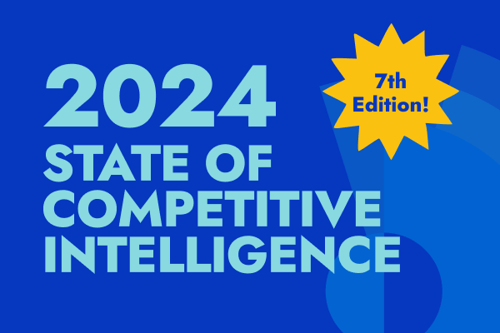Last week, I used data from Crayon’s competitor tracking software to show you that your competitors are talking about AI 5x more than they did in 2022.
The data in that blog post is industry agnostic; it represents the average increase in AI-related content across dozens of industries.
In this blog post, we’re going to look within industries rather than across them. Specifically, we’re going to show you the year-over-year growth in AI-related content in these 7 industries:
- Sales automation software (think Gong, Clari, etc.)
- Human capital management software (think Paychex, BambooHR, etc.)
- Social media software (think Hootsuite, Sprout Social, etc.)
- Project management software (think Airtable, Asana, etc.)
- Threat intelligence software (think Anomali, CrowdStrike, etc.)
- Video marketing software (think Vimeo, Wistia, etc.)
- Identity management software (think Ping Identity, SecureAuth, etc.)
Important context: Each of the 7 images you’ll see below mention the “insights” captured by Crayon. An “insight” could be a blog post, a social media post, a press release, a news article, a job posting, a customer review, a website copy change … you get the idea. In total, Crayon’s technology captures over 100 categories of insights from your competitors’ digital footprints. An “AI-related insight” is an insight that contains the keyword “AI.”
1. Sales automation software
August 2022: Crayon captured 175 AI-related insights.
August 2023: Crayon captured 512 AI-related insights.
Year-over-year change: +193%
The biggest spike occurred in June 2023, when Crayon captured 534 AI-related insights. That month, Salesloft released Rhythm, an AI tool that helps sellers prioritize their daily activities.
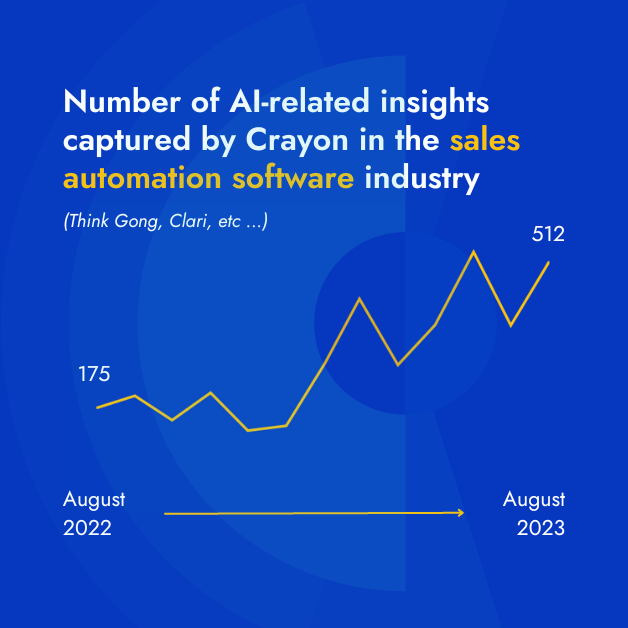
2. Human capital management software
August 2022: Crayon captured 25 AI-related insights.
August 2023: Crayon captured 154 AI-related insights.
Year-over-year change: +516%
The biggest spike occurred in August 2023. That month, ADP announced the addition of generative AI capabilities to their Roll app.
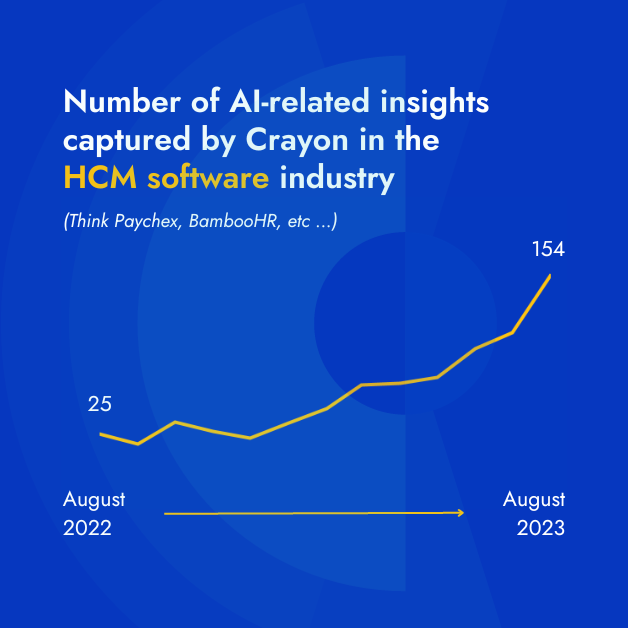
3. Social media software
August 2022: Crayon captured 77 AI-related insights.
August 2023: Crayon captured 298 AI-related insights.
Year-over-year change: +287%
The biggest spike occurred in June 2023, when Crayon captured 321 AI-related insights. That month, Sprinklr released a slew of AI features, including one that makes it easier for their users to build customer-facing conversation bots.
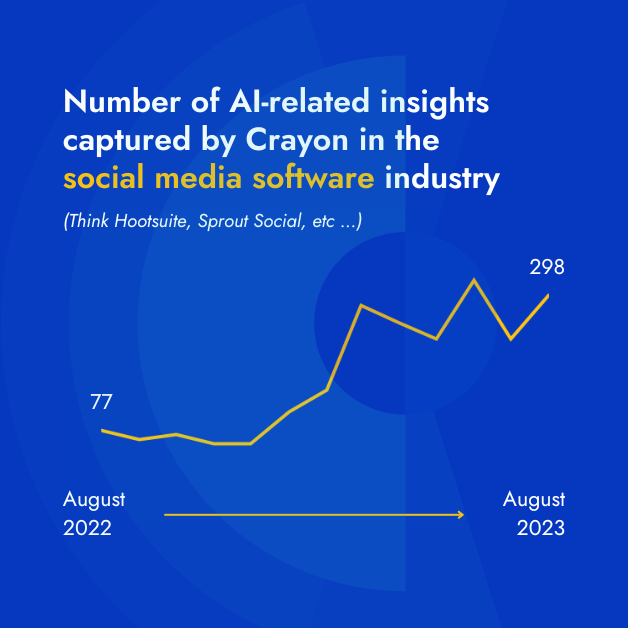
4. Project management software
August 2022: Crayon captured 16 AI-related insights.
August 2023: Crayon captured 234 AI-related insights.
Year-over-year change: +1,363%
The biggest spike occurred in July 2023, when Crayon captured 239 AI-related insights. That month, Smartsheet released a suite of generative AI features, including an assistant that can generate a formula based on a simple description of what the user needs to accomplish.
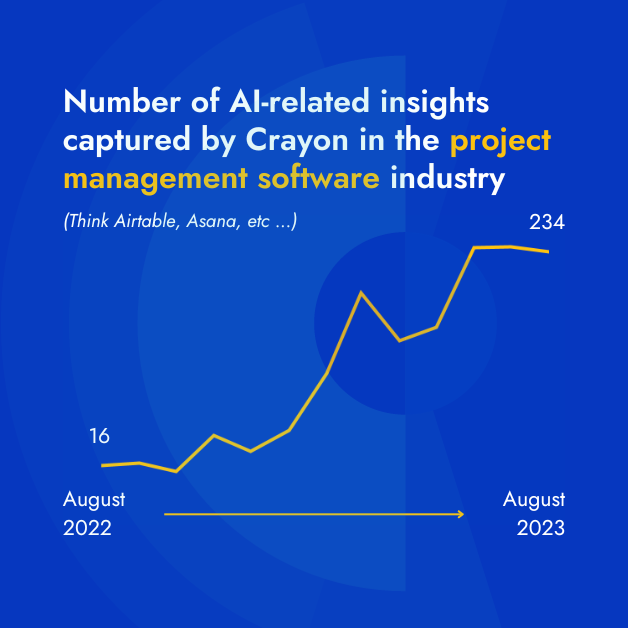
5. Threat intelligence software
August 2022: Crayon captured 149 AI-related insights.
August 2023: Crayon captured 376 AI-related insights.
Year-over-year change: +152%
The biggest spike occurred in August 2023. That month, Splunk introduced their AI Assistant.
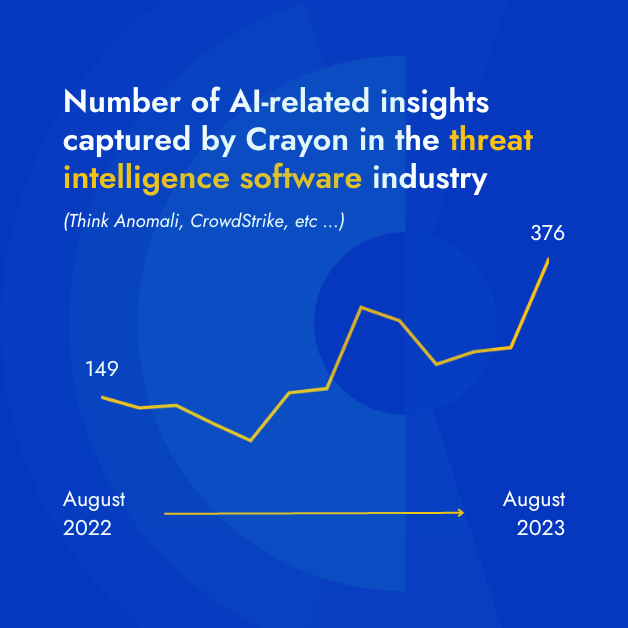
6. Video marketing software
August 2022: Crayon captured 68 AI-related insights.
August 2023: Crayon captured 434 AI-related insights.
Year-over-year change: +538%
The biggest spike occurred in August 2023. That month, ON24 hosted a webinar in which they showed their customers how their AI Engine can help automate the content creation process.
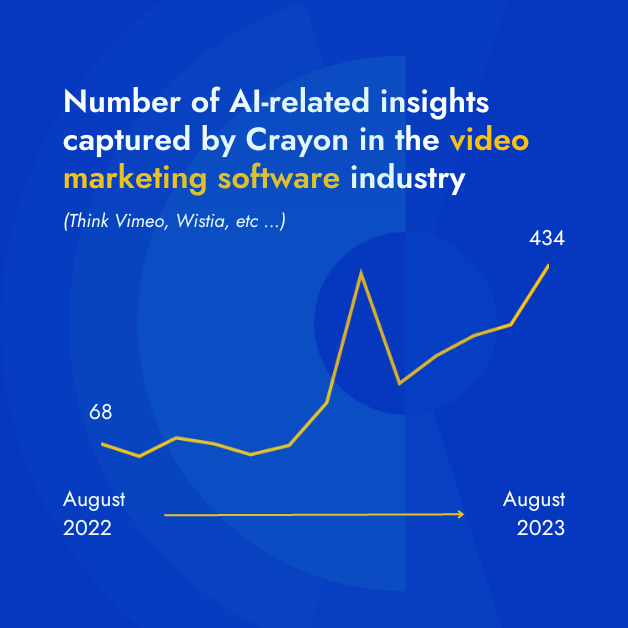
7. Identity management software
August 2022: Crayon captured 32 AI-related insights.
August 2023: Crayon captured 268 AI-related insights.
Year-over-year change: +738%
The biggest spike occurred in August 2023. That month, Ping Identity published a blog post about the role that their solutions play in mitigating the risks posed by AI.
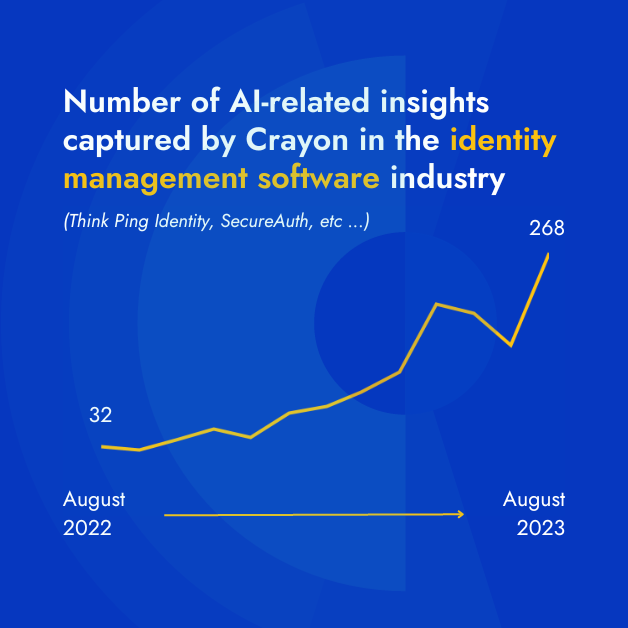
If you’re feeling overwhelmed by your competitive landscape, the Competitor Coefficient can help
If your industry is anything like the 7 we’ve covered in this blog post, you’re probably overwhelmed by the volume of competitive information that exists on the internet—the AI-related stuff and otherwise.
We created the Competitor Coefficient—a number that represents the threat that a competitor poses to your company—to help you feel less overwhelmed. You can learn more about it in this blog post.

Seeing is believing! Check out Crayon for yourself.
Take a Product TourRelated Blog Posts
Popular Posts
-
 The 8 Free Market Research Tools and Resources You Need to Know
The 8 Free Market Research Tools and Resources You Need to Know
-
 6 Competitive Advantage Examples From the Real World
6 Competitive Advantage Examples From the Real World
-
 How to Create a Competitive Matrix (Step-by-Step Guide With Examples + Free Templates)
How to Create a Competitive Matrix (Step-by-Step Guide With Examples + Free Templates)
-
 24 Questions to Consider for Your Next SWOT Analysis
24 Questions to Consider for Your Next SWOT Analysis
-
 How to Measure Product Launch Success: 12 KPIs You Should Be Tracking
How to Measure Product Launch Success: 12 KPIs You Should Be Tracking

